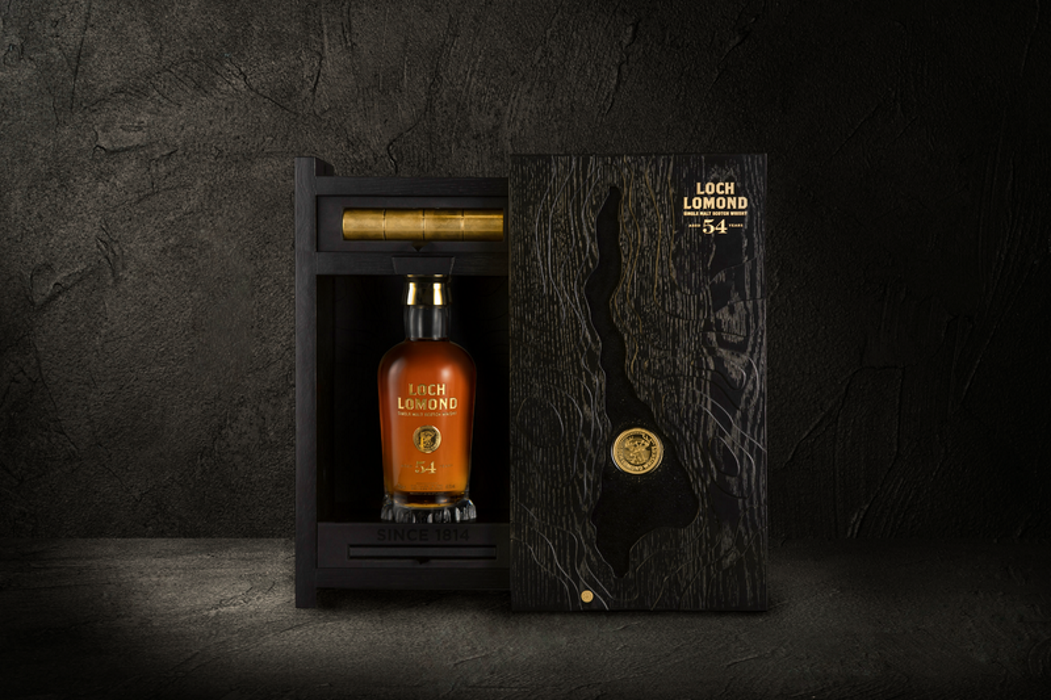The Old Lady of Loch Lomond

Loch Lomond Distillery has just announced the release of the oldest whisky in its portfolio. Any day now, whisky distilled on the shores of Lake Loch Lomond 54 years ago will be on offer in selected specialty stores.
Loch Lomond 54yo is a whisky dating back to the distillery's early years, one of the first distillates. The whisky flowed from the alembics in 1967 and went into a hogshead refill cask of American oak. In 1994, this whisky was poured into a European oak hogshead cask, which had previously held sherry. In more than half a century of maturation, the alcohol content has dropped to 41.1% vol., that is, it came quite dangerously close to the limit of the minimum strength allowed by law for whisky.
Loch Lomond 54yo is a beverage from whose aroma we can expect notes of caramel, vanilla, brown sugar, roasted oak, orange peel and orange marmalade. In the taste we find accents of pineapple, lemon, honey and raisins.
Only 55 hand-crafted Glencairn Crystal decanters will soon be on the market, offered in decorative boxes inspired by the nature of Loch Lomond National Park, with the outline of Lake Loch Lomond on the front panel. The cost of buying a single decanter is an expense of about £24,000.
The distillate in question was produced at the initial stage of the distillery's operations, when it was equipped with only two alembics. These were tempering apparatuses with straight, wide necks, in which rectification plates were hidden. They were among the first Lomond still-type alembics, and the plates in question were intended to allow the distillation dynamics to be adjusted and facilitate reflux, so that the final product would be characterized by greater purity and fineness. For this reason alone, the aforementioned launch of the oldest Loch Lomond in history is worth noting.
The Loch Lomond Distillery is known as a plant that is equipped with a whole range of different types of tempering apparatuses - different shaped and sized alembics and column apparatuses - so that it is able to produce a multitude of different types of whisky, and both malt and grain whiskies. It is undoubtedly the most versatile whisky distillery in Scotland. Among the whiskies produced there you will find such brands as Croftengea, Inchmurrin, Old Rhosdhu, Inchmoan and others.
Despite the enormous potential regarding both the volume of production and its diversity, Loch Lomond for many years struggled with a reputation as a producer of uninteresting whisky, even despised by connoisseurs. This was mainly due to the fact that most of the production was destined for blends, and the small amount of local whiskey that went to market as single malt ended up in bottles as a distillate that was too young and not of the best quality. The situation changed only in the last decade, when new owners came in and new management overhauled the distillery's marketing policy. Today, there are few left to whom Loch Lomond whisky does not suit in terms of the quality of the editions on offer. The brand has seen unprecedented growth in sales and popularity, with a presence in all major global markets.
It is worth mentioning at the end, however, that the Loch Lomond 54yo described today was created at a time when only two alembics were in operation at the Loch Lomond distillery, a state that only changed in 1990, when two more were installed. Expansion with column instruments and more alembics is a matter of only the mid-1990s and beyond. Currently, the distillery is capable of producing 5 million liters of pure alcohol for single malt whisky, and 20 million liters of single grain.
Enthusiasts of whisky from under the Loch Lomond banner are encouraged to visit the House of Whisky Online, where we have on offer a fairly wide range of whiskies produced on the shores of Lake Loch Lomond, at the distillery of the same name.
[20.10.2022 / photo: Loch Lomond]